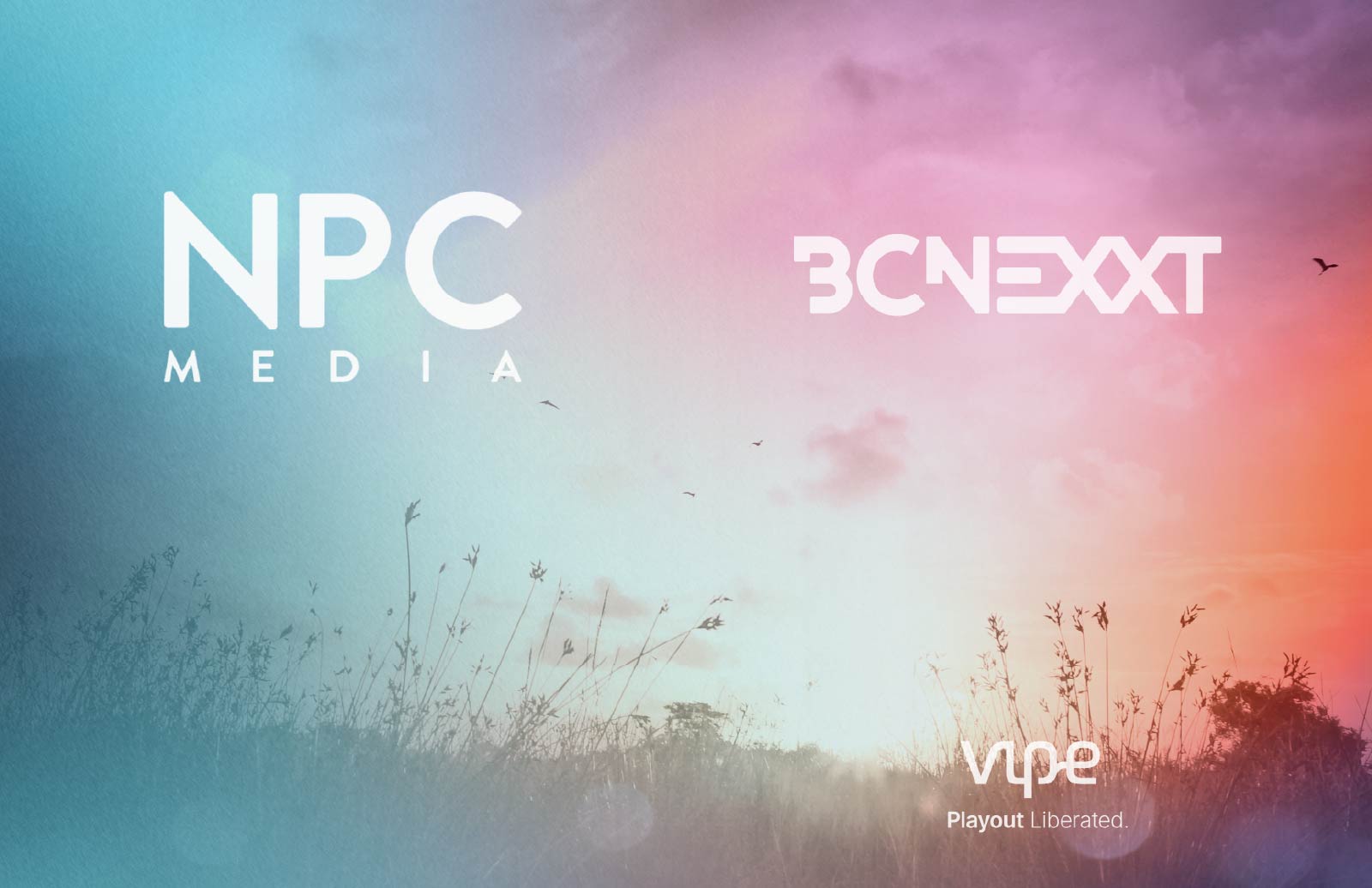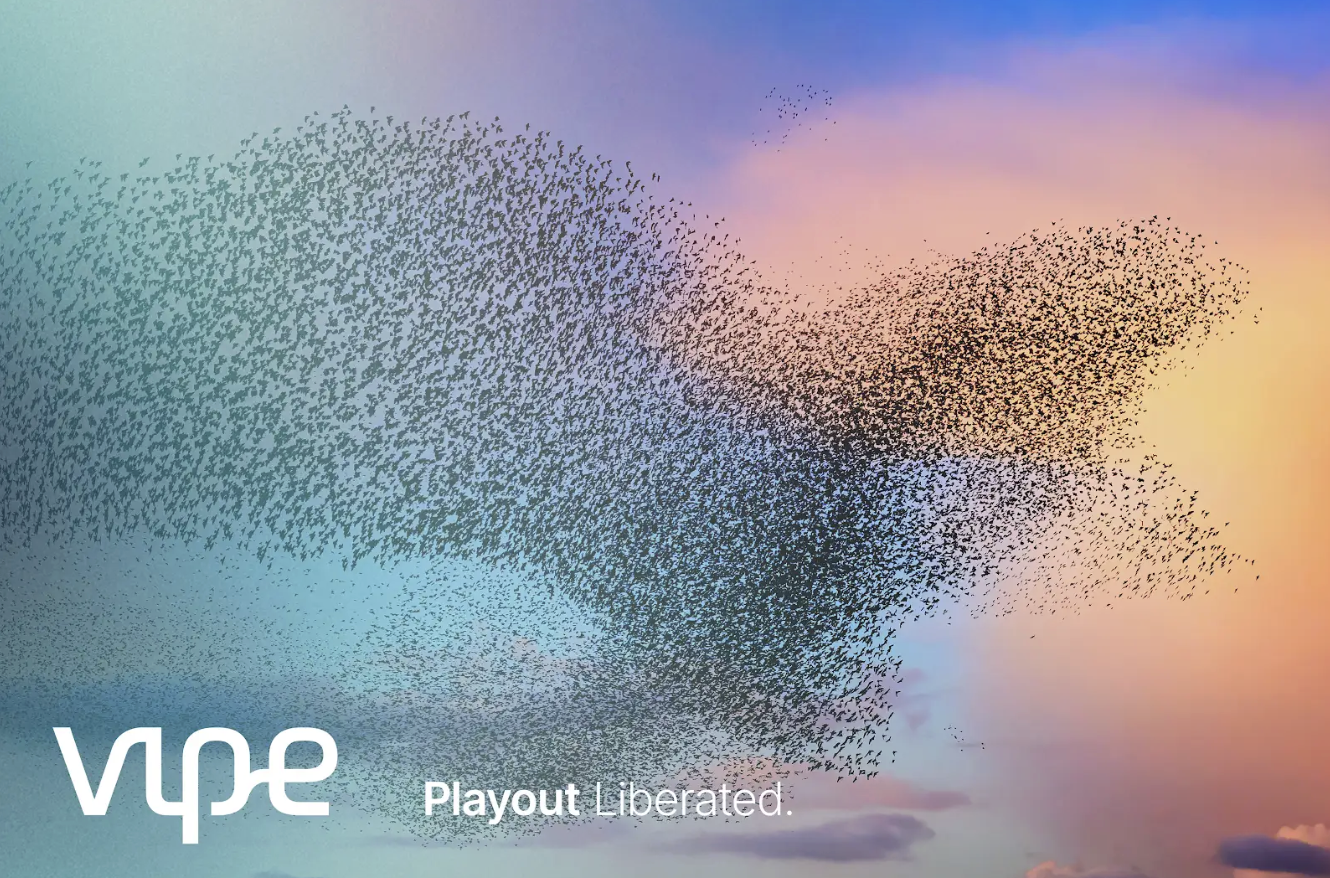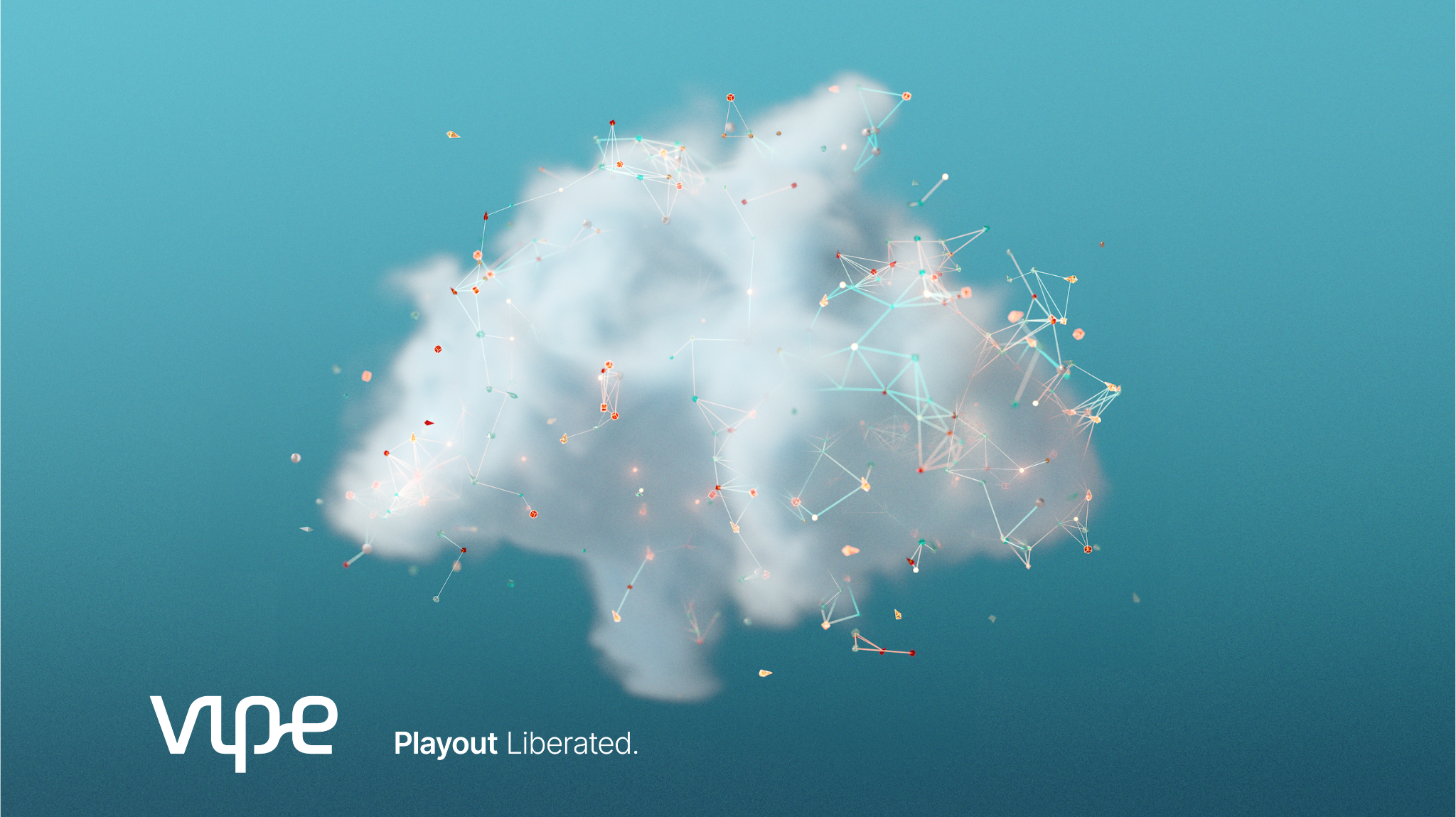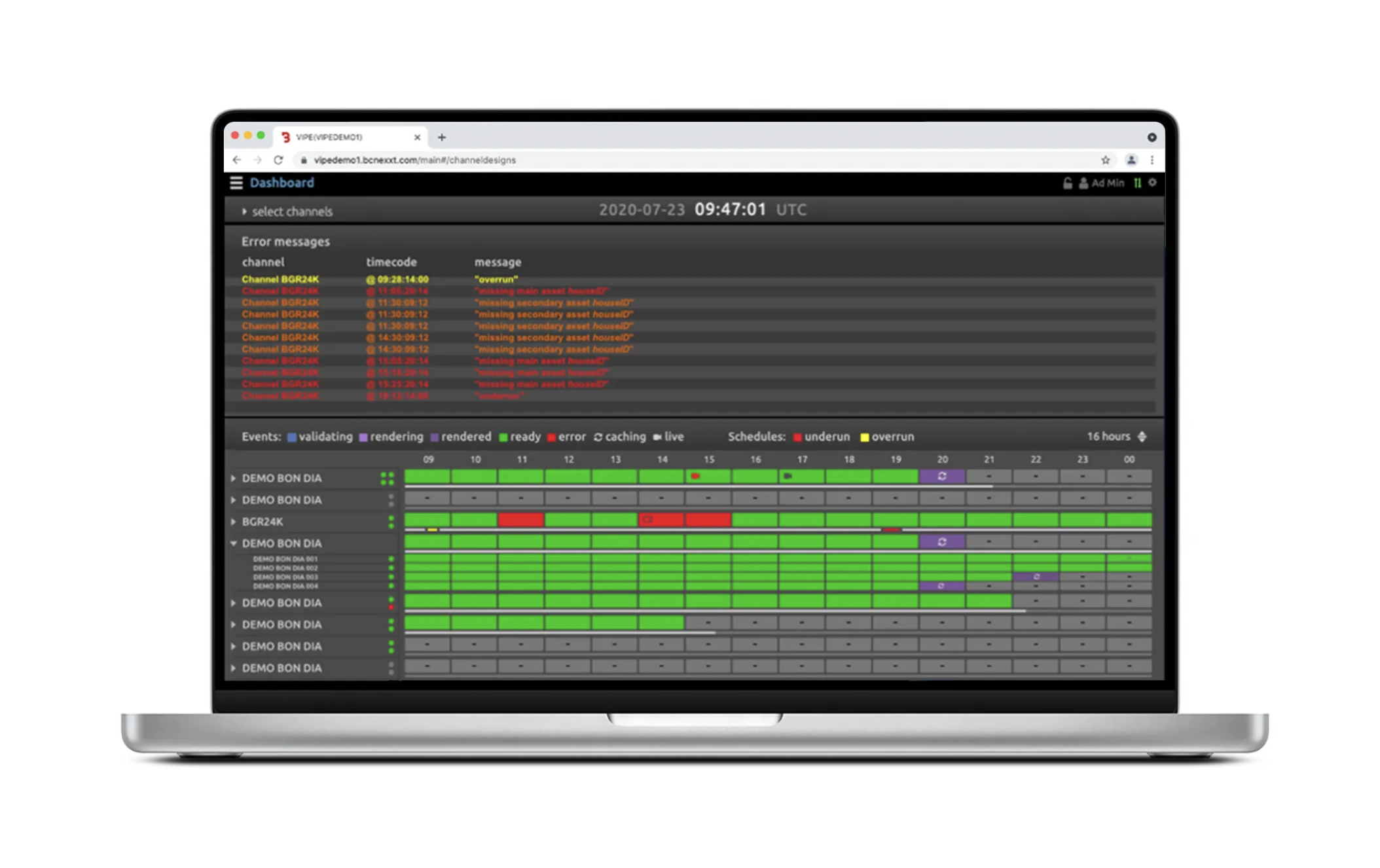Overprovisioning Is So Over: Only Pay for What You Use — Not a Byte More
By Graham Sharp
The cost pressures in the broadcasting industry are no secret, but true solutions to these challenges are often rare. What if you could only pay for the resources you use, exactly when you need them? Or as the ad says "Only pay for what you need." Welcome to the world of dynamic scalability, where the flexibility of containerized playout software redefines cost-efficiency and performance.
The Evolution of Playout Technology
Traditionally, playout systems consisted of multiple discrete hardware components. These included switchers, tape machines (later replaced by file-based disk recorders), a Digital Video Effect (DVE) unit, and character generators. For flexibility, some components, like the DVE, were physically portable, allowing them to be wheeled across control rooms in a flight case to meet operational demands.
As technology advanced, this once hardware-heavy workflow transitioned into software-driven solutions. "Channel-in-a-box" systems centralized multiple functionalities into a single software platform running on robust servers with advanced graphics cards. This streamlined operations, but had limitations, particularly in scalability and cost control.
This "Channel-in-a-box" software was eventually moved into the cloud to run on Virtual Machines (VMs), but VM’s consume resources even when idle, like leaving an air conditioner running on high while no one is home. This inefficiency diluted the potential savings and scalability that cloud adoption promised.
Finally, playout technology is utilizing containerized micro services, disassembling the playout process into its constituent parts and only turning them on and off as they are required. Designed to overcome the limitations of both legacy hardware and early cloud implementations, containerized microservices provide efficient resource allocation, bringing cost efficiencies, and operational flexibility to those deploying modern software solutions.
From Peak Loads to Quiet Periods—Only Pay for What You Play
A containerized microservices approach disassembles processes into discrete components, enabling businesses to deploy and pay for resources on demand. BCNEXXT’s Vipe takes this concept to new heights by offering unparalleled playout flexibility, tailored to meet the specific needs of the broadcasters and streaming services content.
Unlike traditional solutions, Vipe deploys resources dynamically. You only pay for resources when they're in use, reducing waste and maximizing value. This flexibility is critical in dynamic use cases, such as thematic or event-based programming. And yes, this works for on-prem servers too, often significantly reducing the power of the servers required, by averaging over time, rather than buying only for peak demand.
It's quite an abstract concept, where historically one channel needed one server, we have now broken the one to one relationship, so let me try to explain using a real-world scenario. Imagine a broadcaster with several file-based thematic channels, each playing back file based content, with occasional promos and interstitials with squeeze zooms and ‘coming up next’ style bumpers.
The bumpers need a dynamic character generator, DVE and quite a lot of rendering to create the whiz-bang content. In the old scenario, the playout servers would be scaled with enough compute power to create those bumpers at the point of live and then run partially idle, for the rest of the schedule. In the new scenario, a single render farm is created to create the bumpers ahead of time, which are then distributed to the main channels and also any redundant back up channels.
For 10 channels, old style, that's 10 high end servers, typically 8 CPU and GPU plus any back ups required. New style, an 8 CPU server could play back 8 file based channels - so it requires 12% of the resources. A render server is of course required, to pre-assemble the breaks, but it can be turned on during office hours to create and QC the promos once, then turned off. The amount it is needed is driven by the amount of new content, not the number of channels.
The same technique applies to live; a live concert is scheduled for Saturday. Firstly, I upgrade my Vipe license to Live based on daily consumption pricing, With my weekend promos already assembled on my render Server during the week days, I repurpose my render server to render my live stream in to the transmission stream format and splice it into the channel using my existing, small playout servers.
Overall, businesses only buy the server CPU and GPU power they use and nothing is sitting idle. This gets even more efficient and flexible in the cloud, where they can buy compute, storage, graphics processing etc by the minute.
The Benefits of Cloud-Native Scalability
Running containerized microservices software in the cloud has a multiplying effect on cost efficiency, agility and flexibility as the dynamic scalability of the cloud enables the turning on and off of resources on demand - infinite flexibility.
This delivers a host of benefits to broadcasters and media organizations:
- Cost efficiency: Pay-as-you-use models eliminate idle resource costs. Businesses allocate budgets effectively and invest in operations that deliver value.
- Flexibility: Scale resources dynamically to match the specific requirements of different tasks or events to ensure optimal performance across diverse workflows.
- Sustainability: By leveraging only the resources necessary, cloud-native systems align with sustainability efforts, reducing energy consumption and waste.
- Operational ease: Automatically scaling up or down takes the complexity out of managing cloud resources, so your team can focus on creating exceptional content.
- Future-proof infrastructure: Cloud-native systems are designed for seamless upgrades and integration, ensuring your technology stays ahead of industry changes.
The Future of Playout Is Lean, Live, and Scalable
The era of limited, rigid technology frameworks is over. Solutions like Vipe epitomize the next step in the evolution of playout systems. With its microservices-driven approach, Vipe breaks the old one to one server to channel ratio and strikes the perfect balance of reducing costs, improving efficiency, and staying agile in an industry defined by constant change.
Unlike early cloud implementations that often fell short of their promises, this next wave of innovation delivers on its potential. Dynamic scalability is more than a cost-saving measure. It ensures your operations are as flexible as the content you create, enabling you to focus on delivering compelling and immersive experiences to viewers.
Transform your playout technology with BCNEXXT to discover how the dynamic scalability of cloud-native solutions can future-proof your operations. Start your transition today.
If you're ready to take the next step into a new era of broadcasting, contact us to learn more. Together, let's redefine what your business can achieve.




















.jpg)


.png)



















